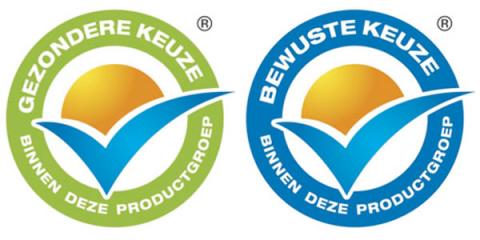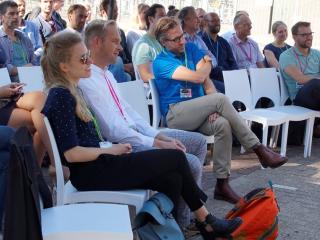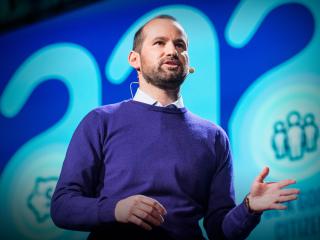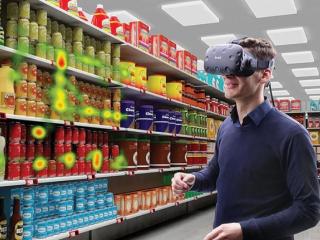The effect of ‘Buy one, get one free’
Dr. Arjen van Lin examines purchasing behavior and examines whether deals like ‘Buy one, get one free’ lead to more food waste. He works at the Marketing Department of the Tilburg School of Economics and Management at Tilburg University. Van Lin is fascinated by purchasing behavior. What factors affect purchasing behavior and to what extent do new shopping patterns persist? Two of his studies have a link to the 12th UN Sustainable Development Goal: Responsible Consumption and Production.
‘Food wastage is something we really need to deal with,’ Van Lin says. ‘Food must be distributed in a fairer way; while Westerners are throwing food away, people in other continents are starving.’ With his research, he hopes to contribute to solving this issue.
More than 34 kilos per person
The Netherlands Nutrition Centre (Voedingscentrum) reports that the Dutch consumer wasted more than 34 kilos of food in 2019. This amounts to 9.5 % of the edible food bought per person. Almost a third of this amount is unused or still packaged food. But not only consumers are part of the solution: the retail sector also has a role to play. Van Lin: ‘Supermarkets are criticized because of concern over food waste, by the media, among others, who argue that deals like ‘Buy one, get one free’ lead to more food being wasted. This may happen when people buy too much or fail to consume products before the expiry date and throw food away as a result. Questions have been asked about this in the British House of Lords after The Daily Mail and BBC had reported on this matter. However, no relevant academic evidence was available at the time.’
‘No proof of greater waste’
Together with colleagues of Wageningen University, Vrije Universiteit Amsterdam, and ESADE Business School in Barcelona, the Tilburg researcher initiated a study. ‘At the beginning of 2019, we asked more than 1,500 consumers, over a period of ten weeks, what they did with food stuffs they had bought as part of ‘Buy one, get one free’ deals and during periods without promotions. We are still busy analyzing the data, but as yet we see no greater waste. The data even seem to suggest that people throw away less food. Right now, we are checking whether that is indeed the case. We suspect that consumers buy and consume more consciously during promotions: they think about how they can use the additional food bought and, for instance, keep it in the freezer.’
The effect of warning labels
Van Lin is also interested in healthier and more responsible consumption patterns. ‘In collaboration with Wageningen University, I am studying the effect of warning labels on unhealthy products.’ This is done based on data from Chile, where food-labeling has been mandatory since 2016, but the results are also relevant for EU countries.

He explains that the ‘Choose consciously’ (‘Ik kies bewust’) logo, created by the food industry, has led to much discussion in the Netherlands. ‘Therefore, the Dutch government decided to switch to the Nutri-Score label, with five classification letters, from A to E, whereby E refers to the most unhealthy products.
It is not mandatory for manufacturers; only the EU can impose it.’ This food label was developed in France following independent research. ‘The Chilean label has less nuance than Nutri-Score.’
Unhealthy cereals
The study is about the sale of healthy and unhealthy varieties of products. ‘We are studying, among other things, how purchasing patterns changed after the introduction of the label and to what extent new purchasing patterns persist. We have at our disposal the purchasing data of 2000 households over the 2.5 years before to 18 months after the introduction of the label. We have discovered, among other things, that the sale of the most unhealthy cereals decreased by approximately 10% and that this was a lasting effect of the label.’
How will Dutch consumers react?
Also in the Netherlands, ideas are being developed about how to help people make healthy choices. ‘The ‘Choose consciously’ logo was criticized a great deal, also because it had been developed by the manufacturers themselves.’ However, Nutri-Score, that is only used for few products in Dutch supermarkets, is has already being criticized, too. ‘For instance, because Coke Zero would get a B and olive oil a D. I am eager to find out how this will develop further in the Netherlands. How are consumers going to react and what will manufacturers do, change formulas and recipes of their products to get a more favorable label? Will they take products off the market? Studying the effects on the manufacturers would also make an interesting research topic. Even if consumers do not react, the system is still a success if the manufacturers change their product range.’
Arjen van Lin’s academic career

In 2018, Van Lin returned to Tilburg University, the university where he earned his PhD in 2014. Prior to this, he taught at Vrije Universiteit Amsterdam. He develops econometric models to predict and explain consumers’ shopping patterns. Van Lin’s research has been published in the Journal of Marketing Research and in Management Science, among other publications. When questioned about his research dream, he answers: ‘I would like to collect data over a long period of time on what people do with their purchases. I'm talking about at least twenty years. This has not been done yet. It would also be nice to be able to see how people’s shopping patterns change at different life stages. To this end, I would have to follow people for three or four decades. For example, do people continue to buy the peanut butter they used to eat as a child, like I do? And what is the impact of having children?’
Date of publication: 20 January 2020



